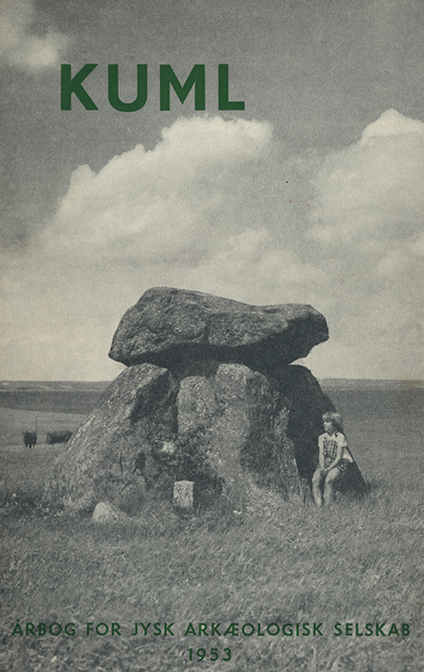Mellemholm
DOI:
https://doi.org/10.7146/kuml.v3i3.97112Keywords:
Mellemholm, Bronze age grave, Stone age grave in bronze age, SettlementAbstract
Mellemholm
In the parish of Nørholm, in Hornum Herred, North Jutland, stands an isolated hill, formerly an island, called Mellemholm. Its western side, out towards the Nibe estuary in Limfjord, is a shallow slope of flint, pebbles and gravel, at the foot of which are broad flats, now cultivated.
On this slope three graves containing objects of bronze were found in the course of an investigation. One was a woman's grave containing a belt plate, an armlet and a ring, another a child's grave containing an armlet and a ring, and the third a man's grave with a belt clasp and a pin.
Across the foot-end of the woman's grave lay a human skeleton in a sharply contracted position, only barely covered by a layer of oyster shells and rubbish. A similar discovery was made in the child's grave, whereas the man's grave, on account of the absence of calcium in the soil, showed no trace of skeletons. It must nevertheless be considered as established that it was the custom on Mellemholm to accompany burials with a human sacrifice.
Above the graves lay the remains of a settlement site, with large quantities of flint swarf from the manufacture of implements, with discarded implements and with trial strikes of raw flint. Above the woman's grave this layer was thicker, forming a low tumulus, the contours of which were somewhat vague but in general followed the conformation of the ground. This tumulus had been formed gradually as a results of the inhabitants of the settlement having had their workplace and their hearths here. These were time and again drifted over by wind-borne sand, whereupon new hearths were built above the sand. Food remains were discarded on this site, including a heap of oyster shells, which, however, are probably merely the more imperishable remains of a more varied refuse heap. The western edge of this heap of shells extended to cover the woman's grave, and its calcium content helped to preserve the bones in this grave, particularly those of the sacrificial victim, which lay immediately under the shell heap and would even appear not to have been completely covered by earth, before the shell heap extended over them.
The stratification of the shell heap above the woman's grave established that the graves were earlier than the settlement, or at least that the settlement continued to be occupied for some time after the inhumations. The reason for the eventual abandonment of the settlement was doubtless that the supply of raw flint was used up.
The types of implements found are those of the latest phases of the Stone Age, though only one specimen - a sickle - was found unbroken. Fragments of sickles are numerous and include some of a type which must have had a bronze sickle as prototype (fig. 10); fragments of spearheads or daggers are also common. On the other hand axe semifabricata are absent and the whole range of objects appears to be of later date than the flint smithy at Fornæs, even though some types are common to both sites, among these the implement which P. V. Glob calls a "beak" and which is common in both discoveries.
This site appears to prove that implements of flint were manufactured and used right up into the Second Period of the Bronze Age, and even to have been so dominant that there is good reason for calling Mellemholm a Stone Age settlement lying above Bronze Age graves!
Grantzau, Marseen og Riismøller
Downloads
Published
How to Cite
Issue
Section
License
Fra og med årgang 2022 er artikler udgivet i Kuml med en licens fra Creative Commons (CC BY-NC-SA 4.0).
Alle tidligere årgange af tidsskriftet er ikke udgivet med en licens fra Creative Commons.


